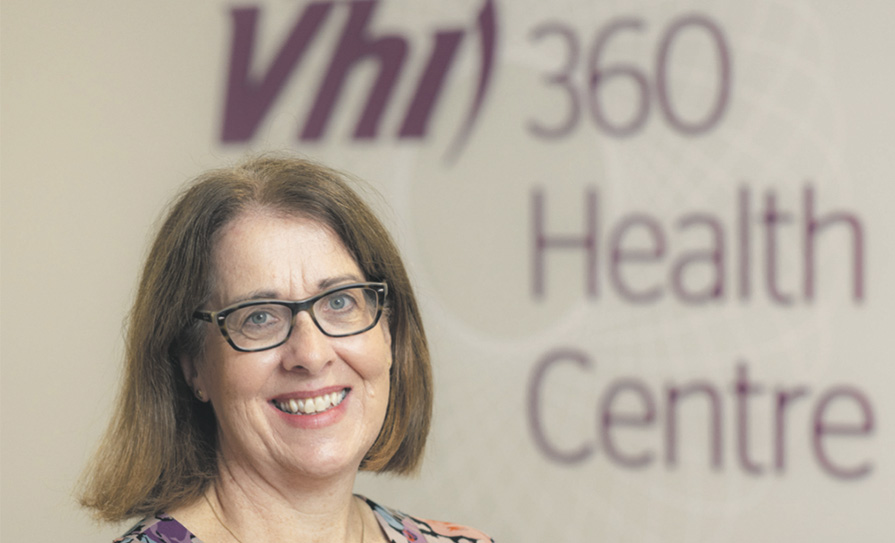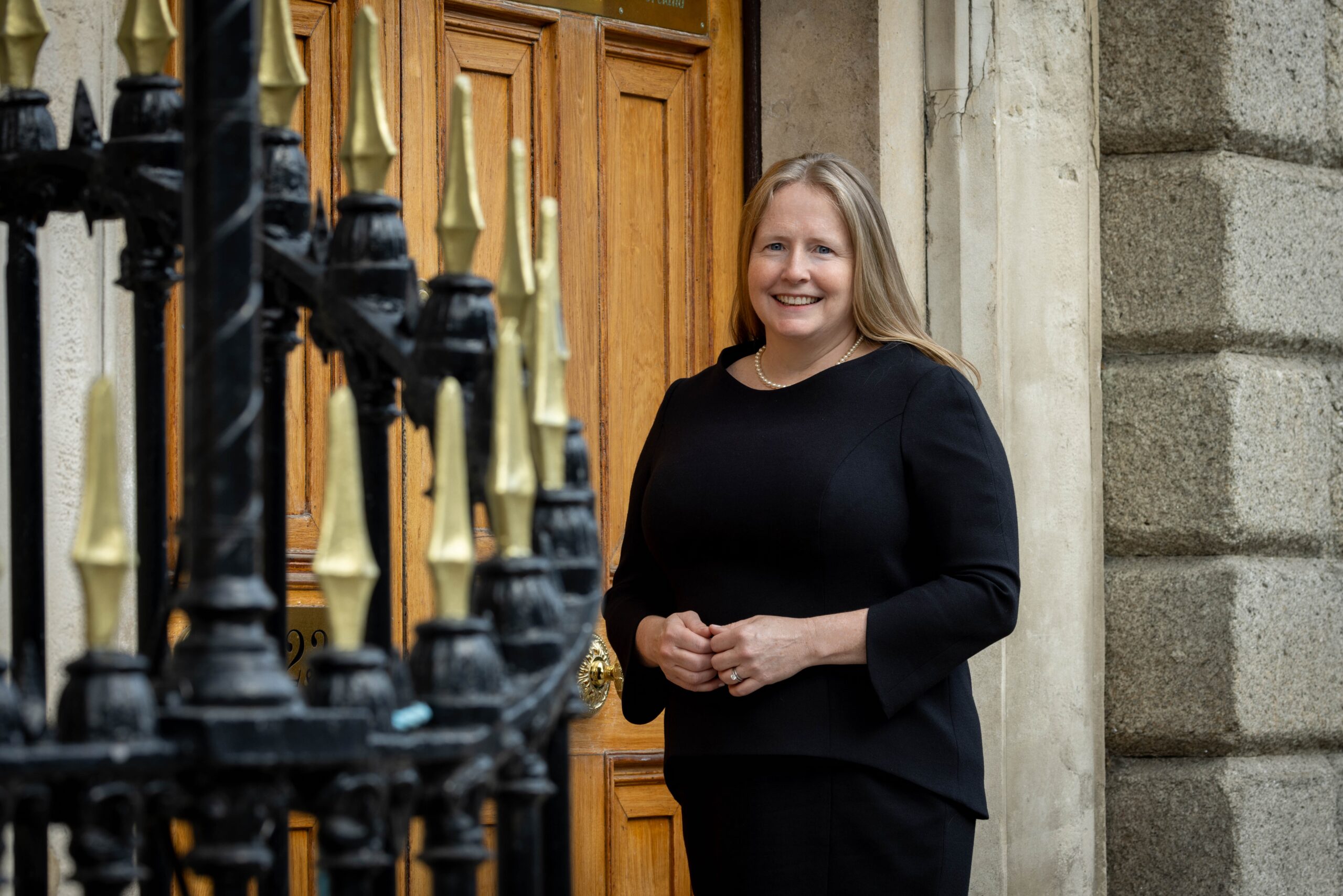Dr Neil Martin is a medical advisor to the world-class performance programme for British swimming and many other UK national teams and elite sports, and manages asthma for a number of international athletes and sports teams.
He attended medical school in Edinburgh before training as a chest physician through the UK’s Royal Navy in Edinburgh and served as a Medical Officer with the Royal Navy, where he developed specialist interests in diving medicine, submarine medicine and undertook a tour of Afghanistan.
Dr Martin started as a Consultant Physician in 2011 at the Glenfield Hospital, Leicester, where he continues to carry out clinical duties one day per week, while he also works for GSK’s Global Medical Expert Team of the Respiratory Franchise. He was in Ireland recently on behalf of the company to talk to respiratory physicians in a number of hospitals about treating refractory asthma and how to use the new anti-interleukin-5 (IL-5) biologics to do so.
In an interview with the <strong><em>Medical Independent</em></strong> (<strong><em>MI</em></strong>), he emphasised that having asthma should not prevent athletes from reaching their full potential, once properly managed, and that all patients should aim for optimum asthma management, whatever their circumstances.
“I think asthma in general is something we need to get better at managing. I think if we look at the last 10-to-15 years in the general asthma population, we have had good guidelines and good medications for asthma… but we have had no impact on the prevention of asthma deaths in the same time point, so we are at a bit of an impasse. We are making the same mistakes again and again and we are trying to push and develop better treatments for asthma patients but actually, fundamentally, we need to be making sure we are using the treatments we’ve actually got to the best of our abilities,” he said.
<h3 class=”subheadMIstyles”>Compliance</h3>
Dr Martin noted that medication compliance is a key issue in optimum asthma management and that therapies must be as straightforward to use as possible.
“Patients’ adherence to medication is a big factor in terms of asthma control. How we structure asthma services and communicate to patients is another big factor. But I think in asthma in general, doing the basics well is what we need to do. So we have good guidelines and good medicines but what we need to do is translate those good guidelines into good clinical practice.
“The things we need to do are educate our clinicians better, so that is [in] primary care in terms of GPs and nursing staff, educate our patients better in terms of what the disease is and how we treat it, and really look at control as a key thing we concentrate on, so we want a control-centred approach.
“The last thing is to tackle non-adherence to asthma medication, because non-adherence to medication is by far one of the biggest risk factors for asthma deaths or serious exacerbations of asthma,” he told <strong><em>MI</em></strong>.
<img src=”../attachments/02377289-0e0b-40e2-8a13-8e2be50af40e.PNG” alt=”” />
<strong>Dr Neil Martin</strong>
Dr Martin pointed out that while some children can ‘grow out’ of asthma in adolescence, “as an adult, growing out of your asthma is a rare thing. So asthma is a life-long condition. The challenge for asthma patients is that once they feel better, they stop taking their treatment and invariably, there will be a period of time where they are building up inflammation of their lungs, they have an exacerbation and they go back onto their treatment. People will continue to do that.
“The idea for patients is, feeling like you don’t have asthma is entirely what we are trying to achieve with your medicine, so the whole point is that we are trying to remove barriers to your daily life.
“When you talk to most asthma patients and you ask them ‘how’s your asthma?’ [They answer] ‘it’s fine’. But actually, when you ask them a structured question about control of their asthma, many of these patients will have poor control and the reason their control is poor is because they have adapted their lifestyle to their asthma.
“They’ve stopped doing things that will set-off their asthma symptoms. They no longer exercise, they no longer go into dusty environments, they don’t play with their grandkids, they don’t run around with their kids.
“So they adapt their life around poor asthma control and they think they are fine, that ‘well, I should be like this, I’ve got asthma’. But realistically, our goal of asthma treatment and the international guidelines is that you feel you don’t have asthma, and you feel you don’t have any side-effects from your medicines. And in many patients, that guideline-defined total control is possible. But we just need to get patients and doctors to understand that that is where we need to be… ”
<h3 class=”subheadMIstyles”>Sports</h3>
In relation to asthma in sports, Dr Martin acknowledged that while there had been some concern over asthma medication and performance enhancement, the World Anti Doping Association (WADA) in 2012 decided that none of the asthma inhalers created performance advantage, that they “were standard asthma medications” and did not need therapeutic use exemptions, just a threshold for their use.
“Pretty much now most standard asthma medications you can use in competition without any significant paperwork and I think that is the right thing to do. Still, among children, talking about pre-school and infant school children, a diagnosis of asthma links into a life-long level of inactivity. So little kids running around getting wheezy and instead of effectively treating them, again they adapt their lifestyle.
“Parents, teachers — everyone is well-meaning but they limit what they do in case it might set-off their asthma. That generates into life-long physical inactivity. We have an obesity epidemic in adults anyway, and therefore those kids will go on to be less active adolescents and adults…
“What we need to be doing is maximising their treatments and allowing them to do what they like, and that is exactly what we do with athletes — we maximise the therapy that they require to allow them to continue to compete at the highest level, and that is what [all] asthma patients should be trying to achieve for themselves.”
<h3 class=”subheadMIstyles”>Guidelines</h3>
Dr Martin also noted that the British Thoracic Society (BTS) guidelines on asthma had recently seen a major revision across a number of areas, including a significant update to the section on pharmacological management of asthma, and updates to the sections on supported self-management.
“The BTS guidelines last year moved to treatment with inhaled corticosteroids for six weeks, with a structured clinical assessment before and afterwards to try and assess asthma control… open-ended questions such as ‘how do you feel?’ are very ineffective in all areas of medicine… we need objective measurements, such as an asthma control score, evidence of lung function change, reduction in exacerbation frequency, so we need to move to that structured assessment for all patients,” which allows for a step-wise approach to management.
Some long-diagnosed asthmatics never gain proper control of their asthma, he pointed out, and this needs to be addressed, with a reassessment of their diagnosis vital.
“Einstein’s definition of insanity is doing the same thing over and over again, expecting a different result. So by the time you are on your fourth or fifth asthma medication and they haven’t got better, maybe we’re not treating asthma.”
Exacerbations for refractory patients are a significant issue and are costly, both economically and physically on the patient. So while working to reduce exacerbations has a cost, “it is cost-effective” as there are long-term savings.<strong></strong>
About 5 per cent of asthma patients are refractory, which can be due to incorrect diagnosis, non-adherence to therapy or unsuitable therapy, or they may have a comorbid disease, Dr Martin explained.
Once a patient is determined to be truly refractory, however, there is now the option of biologic treatment, he outlined, describing it as “the dawn of a new era for respiratory medicine”.
<h3 class=”subheadMIstyles”>New era</h3>
“It has been a very complex pathway [to biologic use] … with unmet need for patients with recurrent exacerbations and hospital admissions, some of them life-threatening admissions, driven by eosinophilic inflammation, and we have no effective therapy for that.”
He said the development of the anti-IL-5 agent mepolizumab, a humanised monoclonal antibody used for the treatment of severe eosinophilic asthma, for example, sought to address that.
“We are at the stage now where we have more and more biologics for asthma coming onto the market. We are probably a decade behind our rheumatology colleagues [regarding biologics]. I think we are, as a group of clinicians, cautious. We tend to look for things that are cost-effective. We don’t want to spend the taxpayer’s money unnecessarily, but I think there is a groundswell of opinion now that these biologic agents really are the answer for a lot of the complex things we’ve seen at the severe end of the asthma spectrum.”
It is hoped that anti-IL-5 therapy will finally be reimbursed for severe asthma in Ireland this year by the HSE. It has been available in many other European countries for a number of years, Dr Martin noted.
“I think there is certainly a need for anti-IL-5 therapy for patients in Ireland. The academic centres we have been to [in Ireland] have all expressed a desire to get going. They have patients who are waiting for treatment… ”
However, he acknowledged that healthcare budgets are under increasing pressure, “so there is a challenge there for us physicians to use the medicines correctly, there is a challenge for us to do the simple things well so the patients don’t necessarily need the complex medicines and there is a challenge back to the pharma industry to make things more cost-effective, to reduce the costs of medicines, so we have to work together to do that… the balance has to be right”.













Leave a Reply
You must be logged in to post a comment.